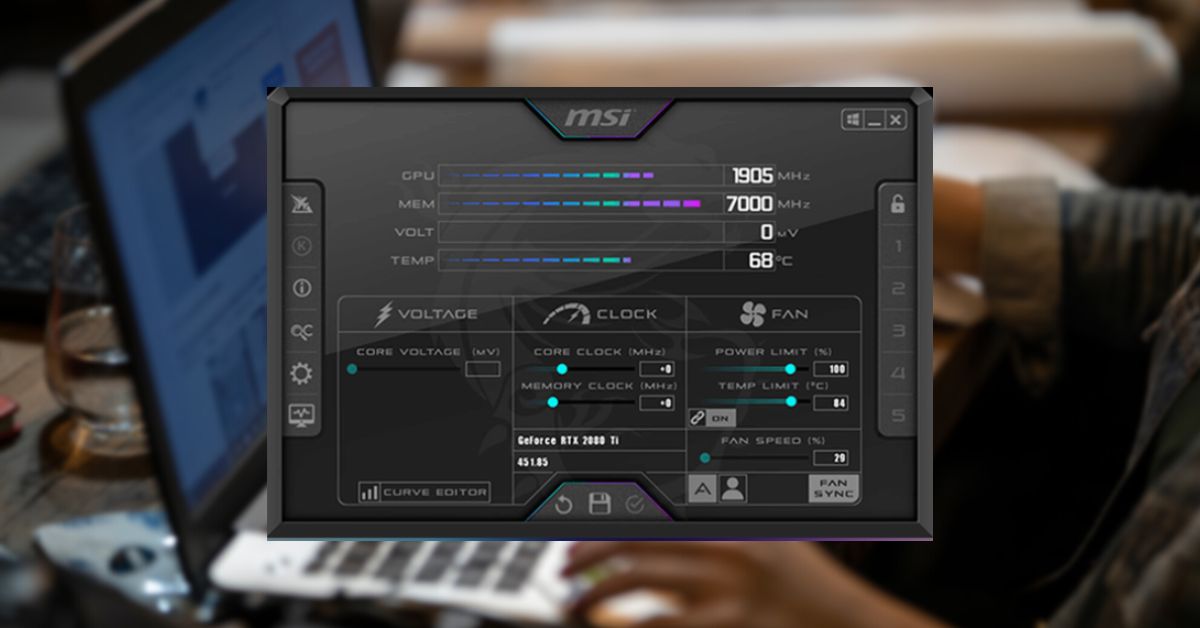MSi Afterburner is a great tool that is used to manage video cards and run benchmarks. But does Msi Afterburner work on laptops and does it affect performance notably?
MSi Afterburner can be good on middle to high-end laptops or if you have a specific need like fan control. Otherwise, the lack of clock and memory timing adjustments you can make on laptops means it’s not generally worth it to have Afterburner on laptops.
Let’s look at some of the pros and cons of the software, as well as some of the best use cases for laptops running it.
How to Use MSi Afterburner on Laptops?
MSi Afterburner works on laptops just as well as it does on desktops. The actual processing power and memory usage are not very high so it is unlikely going to be the difference between your laptop running well or not running at all.
Install MSi Afterburner and run it, and try to increase the performance via adjusting the core clock and memory clock as much as possible. Boost each stat by about 10% and then monitor temperature and stability.
It’s important to remember that most laptops are already running at close to capacity on their internal hardware, and there is not as much room for configuration as compared to a desktop.
Generally, you will want to be keeping the temperature below 90 degrees Celsius or 194 degrees Fahrenheit.
MSi Afterburner allows you to monitor GPU health such as seeing temperature, power limit, voltage, core speed, clock speed, and overall usage of your video card.
If you’re on battery, you can try using undervolting to reduce the energy your GPU consumes, significantly improving battery life if you’re just going to be doing low intensity tasks like writing.
If you want you can also run a benchmarking test with the separate Kombuster app download.
Does MSi Afterburner Work on Any Laptop?
MSi Afterburner will run on any laptop, but unless you have a specific need for it, I wouldn’t recommend installing it. It works with both NVIDIA and AMD-based laptops.
For example, if you want to pump up your fans to deal with internal temperatures that you’re not comfortable with, setting up a fan profile and having MSi Afterburner run on Startup is a great idea.
Open up the Start menu and find the MSi Afterburner app and right-click, tap More, and then click ‘Open file location’. Now, press the Windows logo key and the ‘R’ key simultaneously, type ‘shell:startup’ in the dialog that pops up, then hit OK.
Copy and paste the shortcut into the directory that you opened before and now it will load the program on each startup.
What to Do if MSi Is Not Working on Your Laptop?
Try removing the program and installing it again.
Confirm you have a MSi card by hitting the Start button and ‘R’ again, then typing ‘dxdiag’ into the box that comes up. Find the Display tab up the top and click it, and it should show the name of your card.
Search online to be sure, but generally, it should show MSi in the details on that screen. Now, technically MSi Afterburner can run on any video card, but you’re best off using different software recommended for whatever non-MSi card you have.
Reset all the configurations you have done in Afterburner as it may be causing stability issues. This is especially the case if you notice your laptop getting too hot or crashing, particularly when under high load such as when video editing or gaming.
Does MSi Afterburner Affect Performance?
Although the software has a slight impact on performance, it is so negligible that you don’t need to worry about it.
As an aside, it is widely used while running benchmarking tests, so it can’t be compromising performance so much if serious benchmarkers don’t mind having it running.
There is a potential for it to conflict with other software, but generally, you only need one piece of software to manage your video card, so just uninstall other monitoring and configuration programs to see if that resolves the conflict.


